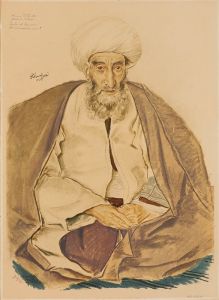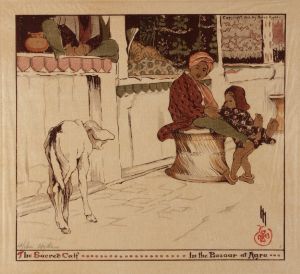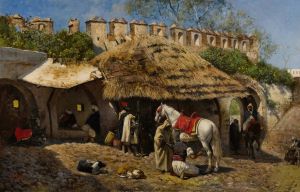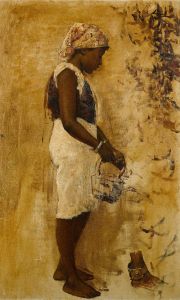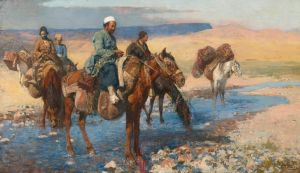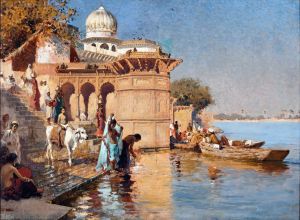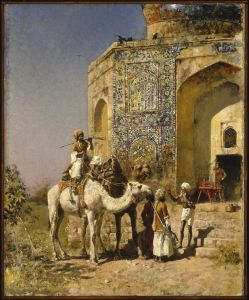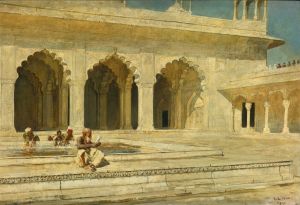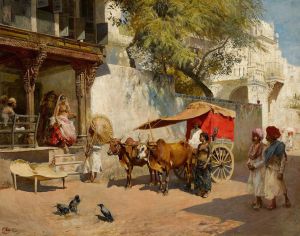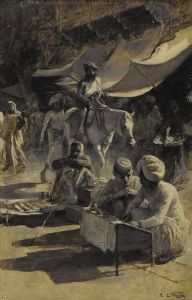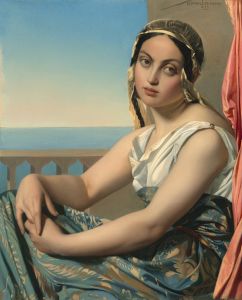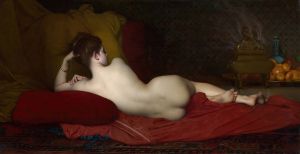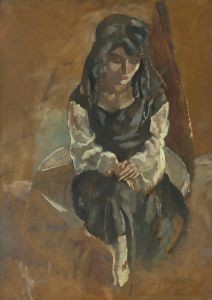
Indian Prince, Palace of Agra
A hand-painted replica of Edwin Lord Weeks’s masterpiece Indian Prince, Palace of Agra, meticulously crafted by professional artists to capture the true essence of the original. Each piece is created with museum-quality canvas and rare mineral pigments, carefully painted by experienced artists with delicate brushstrokes and rich, layered colors to perfectly recreate the texture of the original artwork. Unlike machine-printed reproductions, this hand-painted version brings the painting to life, infused with the artist’s emotions and skill in every stroke. Whether for personal collection or home decoration, it instantly elevates the artistic atmosphere of any space.
Edwin Lord Weeks was an American artist known for his Orientalist paintings, which often depicted scenes from his travels in the Middle East, North Africa, and the Indian subcontinent. One of his notable works is "Indian Prince, Palace of Agra," which captures the essence of his fascination with the exotic and the grandeur of the East.
Weeks was born in Boston, Massachusetts, in 1849, and he developed an early interest in art and travel. He studied in Paris under the tutelage of prominent artists such as Jean-Léon Gérôme, who was known for his own Orientalist works. Weeks' exposure to such influences played a significant role in shaping his artistic style and thematic focus.
"Indian Prince, Palace of Agra" is a testament to Weeks' skill in capturing the intricate details and vibrant colors of the scenes he encountered during his travels. The painting likely depicts a scene set in the Agra Fort or the nearby Taj Mahal, both of which are iconic landmarks in the city of Agra, India. Agra was a significant center of the Mughal Empire, and its architecture is renowned for its beauty and historical importance.
In this painting, Weeks portrays an Indian prince, possibly a member of the Mughal royal family, amidst the opulent surroundings of a palace. The artist's attention to detail is evident in the depiction of the prince's attire, which is likely adorned with rich fabrics and jewels, reflecting the wealth and status of the subject. The background of the painting features elements of Mughal architecture, characterized by intricate carvings, arches, and domes, which are hallmarks of the period's architectural style.
Weeks' work is often celebrated for its ability to transport viewers to distant lands and cultures, offering a glimpse into the lives and environments of people far removed from the Western world. His paintings are not only artistic expressions but also serve as historical documents that capture the essence of the places he visited.
Throughout his career, Weeks traveled extensively, and his journeys to India were particularly influential in his body of work. He was part of a broader movement of Western artists who were captivated by the allure of the East, and his paintings reflect a deep appreciation for the cultural and architectural richness he encountered.
"Indian Prince, Palace of Agra" is a fine example of Weeks' ability to blend realism with romanticism, creating a scene that is both authentic and idealized. His use of light and color brings the painting to life, highlighting the contrasts between the bright, sunlit exteriors and the shaded, intimate interiors of the palace.
Edwin Lord Weeks' contributions to Orientalist art have left a lasting legacy, and his works continue to be studied and admired for their artistic merit and historical significance. "Indian Prince, Palace of Agra" remains a notable piece within his oeuvre, exemplifying his mastery of the genre and his enduring fascination with the cultures of the East.





